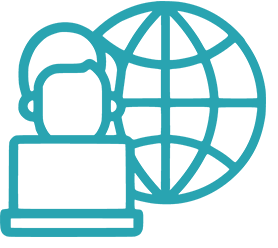ASI Solutions recently hosted a series of lunch roundtable where People and Culture, HR, and Change Management executives came together to tackle a critical challenge: employee engagement in today’s hybrid work environment. With data from Gartner and Gallup driving the conversation, the session uncovered practical strategies organisations can implement to improve the employee experience.
As we continue to explore how organisations can better support and engage their workforce, the insights shared align closely with our broader efforts to help businesses foster a more productive and satisfied team.
Here are the key takeaways from the discussion:
1. Why satisfied employees perform better
Gartner’s research shows that fully satisfied employees are 52% more likely to report high discretionary effort and 89% more likely to meet organisational innovation goals. This means happy employees are not only more productive but also more creative.
To maintain this level of engagement, attendees agreed on the importance of identifying disengaged employees early.
Companies can re-engage these individuals by providing them with a sense of purpose, greater autonomy, and clear growth opportunities. The key is to create an environment where every employee feels empowered and supported.
2. Middle managers: The key to engagement
Gallup’s data reveals that 70% of the variance in team engagement levels is due to managers. Middle managers, in particular, hold the most influence—both positively and negatively.
Roundtable participants highlighted that these managers often face more daily negative interactions despite their higher levels of overall engagement. Supporting middle managers with better tools, training, and resources is crucial to driving broader employee engagement across the organisation.
3. Knowledge transfer in an aging workforce
With many employees nearing retirement, a key challenge is retaining their expertise.
The group emphasised mentorship programs and succession planning as essential for smooth knowledge transfer. These initiatives not only help pass on valuable skills but also enhance the technical capabilities of senior staff, encouraging them to stay in the workforce longer.
Embedding knowledge-sharing into the culture—through structured mentorship or digital tools—ensures critical insights are preserved, minimising disruption when experienced employees leave.
4. Separating productivity, culture, and mission buy-in in hybrid work
The hybrid work model has sparked debates about productivity and company culture. To better understand the impact, attendees suggested separating discussions into three areas: Productivity, Culture, and Individual Buy-In to the organisation’s mission.
While hybrid work may not negatively impact productivity, it can affect company culture and mission alignment. By addressing each area independently, organisations can build strategies to improve engagement, no matter where employees work.
Tailoring “Flexible Work” solutions and increasing transparency about their application can also foster engagement among employees in roles without remote options, such as front-line workers.
5. Measuring and acting on employee feedback
Gartner recommends that organisations co-create their employee experience vision by involving employees in the process, but how much weight should that feedback carry?
The group stressed the importance of transparent, actionable feedback mechanisms, with a standout suggestion being Employee Pulse surveys tied to work anniversaries—providing timely, meaningful insights. Publishing anonymous data and clearly linking decisions to specific feedback increases both transparency and trust.
However, participants noted that employees often feel heard but struggle to see the impact of their input, underscoring the need to visibly communicate how feedback shapes key decisions.
6. Investing in the right areas for employee experience
Gartner reports that companies currently spend an average of $2,420 per employee annually on employee experience, with that number projected to rise to $6,414 within two years, just to maintain the same rate of engagement.
However, to see real returns on this investment, businesses need to focus on initiatives that directly impact employee well-being and growth—such as learning and development programs or career advancement opportunities.
Final thoughts
Engagement isn’t a one-size-fits-all strategy. It’s about providing targeted support where it’s needed most—particularly for middle managers, who play a key role in influencing overall engagement.
Additionally, focusing on the employee experience through continuous feedback, knowledge sharing, and support for hybrid work will create a more satisfied, productive, and aligned workforce.
At ASI Solutions, we’re committed to exploring new ways to help businesses engage their employees effectively. Stay tuned for more insights from our ongoing conversations with industry leaders.
DISCOVER HOW TO DRIVE EMPLOYEE ENGAGEMENT
LEARN MORE
